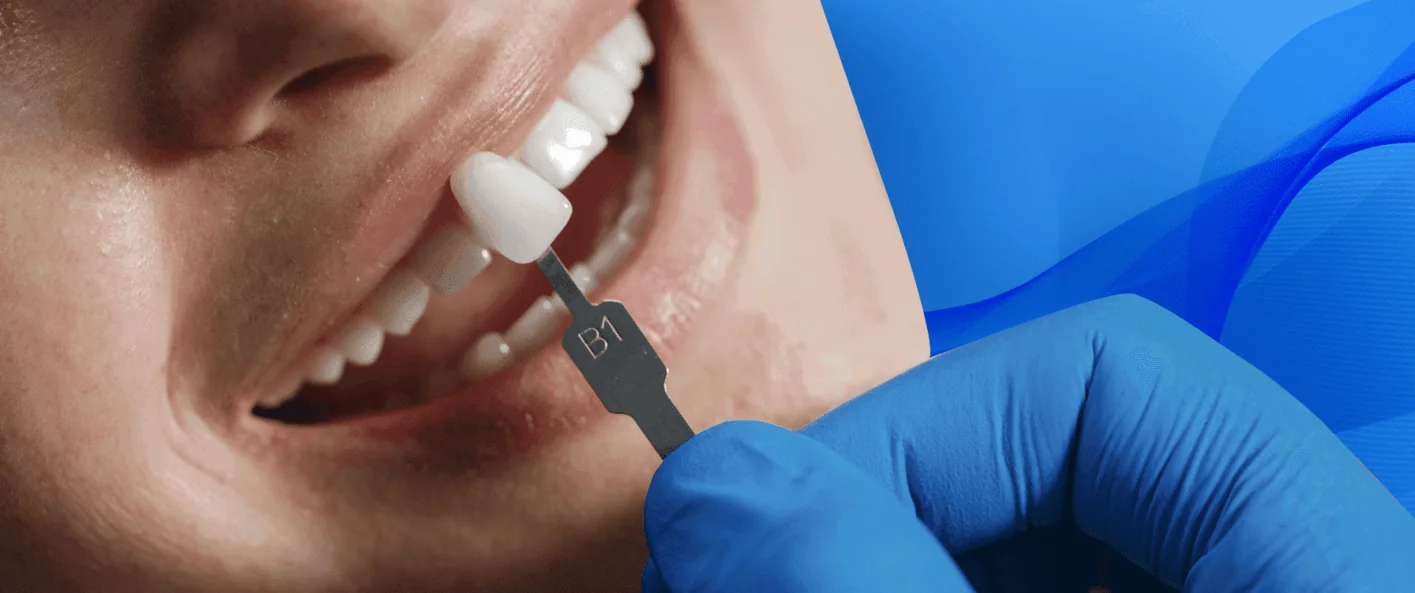Porcelain Veneers
Salih ÖNDER2024-04-16T22:31:30+03:00Teeth can be eroded or lost due to major bruises, traumas and similar reasons. Due to these abrasions and tooth loss, chewing functions and some aesthetic problems occur over time. As a result, various health problems may occur in the digestive system as well as psychological problems such as avoiding social life.
Porcelain veneers, which have been used in the treatment of teeth or tooth deficiencies for many years due to various reasons, are still one of the most applied treatment methods today. Currently, the most applied dental prostheses are metal-supported porcelain veneers.
Dental Group Hospitadent serves you with its expert physician staff in all its branches and in the field of porcelain coatings as well as in all your oral and dental treatments.
What is porcelain veneer?
Porcelain veneers, which are sometimes too large to be treated with filling methods, and sometimes to eliminate tooth deficiencies, are an application that wraps the tooth like a mold and aims to eliminate existing abrasions and deficiencies.
What are the advantages of porcelain veneers?
- Porcelain coatings stand out with their durability thanks to the advantage of their metal infrastructure.
- Metal-backed porcelain veneers are more economical than other veneer methods.
- Due to the porcelain material, they can also be aesthetically pleasing.
- The materials used are safe and do not show any side effects.
What should be considered in porcelain veneers?
- People with porcelain veneers should pay special attention to their gum health. Gum diseases will cause recession of the gums over time, reducing the service life of the veneers. For this reason, it is necessary to give great importance to oral hygiene.
- Clenching and grinding problems also cause gingival recession. It is recommended that patients with these problems take precautions such as the use of night plates.
- From time to time, food residues may accumulate under the part of porcelain coatings designed as bridges, which is considered as the body and covers the tooth deficiencies, and discomfort such as bad breath may occur. For this reason, the bottom of the body parts should be cleaned with special brushes and threads. Again, it is important that there is no accumulation at the junction of the veneer and the tooth in the veneers and single tooth veneers of the teeth, which are described as bridge legs, and these areas should be carefully cleaned. If food accumulations that cannot be cleaned and prevented are formed, it is recommended to consult your physician.
- If there are discolorations on the teeth in the mouth that cannot be removed by cleaning methods and therefore whitening treatments are planned, these treatments should be performed before porcelain veneers are applied. Because the whitening materials that affect the teeth do not affect the porcelain.
- Although there is not much discoloration on porcelain surfaces, coloring foods such as tea and coffee may cause some discoloration. For this reason, it is recommended not to consume too much.
- It is recommended to be applied in the posterior regions instead of the anterior teeth, where aesthetics is important, as a more opaque appearance will occur due to the metal under the porcelain. In the anterior regions, porcelains with zirconium infrastructure or full ceramic porcelains give better results.
- Very rarely, people may experience allergic reactions to Chromium-Cobalt, Chromium-Nickel or other metal alloys used. In these cases, zirconium supported or full porcelain veneers should be used.
What is porcelain veneer used for?
- Excess material losses in the teeth, called excessive crown destruction, can be eliminated with porcelain veneers. While these material losses sometimes occur due to large caries, sometimes they can occur in the form of tooth fractures due to trauma.
- In case of missing teeth, treatments called “bridge” and applied by covering the teeth on the sides of the missing teeth can be applied.
- Implant prostheses can be made with porcelain veneers.
- In patients who do not want orthodontic treatment, porcelain veneers can be applied to eliminate crowding.
- Porcelain veneers can also be used in cases where the closing dimensions are reduced as a result of wear due to clenching and grinding.
- Over-colored and aesthetically inadequate teeth can be restored with porcelain veneers.
Who can porcelain veneers be made for?
Metal-supported porcelain veneers can be applied to every patient who has completed the development of teeth and jaws, when needed.
How long does porcelain veneer treatment take?
With digital dentistry, treatment times have also shortened. Treatment times vary according to the intraoral condition and the number of teeth. Durations vary between 1 day and 1 week.
Porcelain veneers are also made very quickly after the condition of the gums and other dental treatments.
How is the lens coating done?
- First of all, a detailed intraoral examination of the patient is performed. Tooth deficiencies and teeth with excessive substance loss are determined.
- If there is a need for oral hygiene, such as tooth extraction, gum treatment or tooth cleaning, these treatments are performed.
- In order to guide the temporary coatings and show the initial state of the mouth, measurements are taken from the patient’s mouth and plaster models are obtained.
- The teeth to be cut and the surrounding tissues are anesthetized with local anesthesia.
- By reducing the teeth, the size and shape on which the porcelain veneer can fit easily is created.
- Measurements are taken to obtain the required model for obtaining the porcelain veneer. Silicone-based materials are generally used when taking these measurements.
- Then, with the help of special candles, the patient’s tooth closing shape is determined. In some cases, when there is no tooth contact that determines the bite and can guide the mouth, the bite size is determined by using other face sizes.
- Temporary veneers are obtained in accordance with the cut and reduced teeth of the patient. Acrylic materials are generally used in these temporary coatings. Temporary prostheses are obtained in two ways: the direct method made with the help of the measurement taken in the patient’s mouth, and the indirect method prepared on the model obtained. Then, these temporary prostheses are applied to the patient’s mouth with an easily removable adhesive material and the first session of the treatment is thus completed.
- In the second session, which is held a few days after the first session, the metal parts that make up the infrastructure of the porcelain coatings are rehearsed and their harmony is checked. Adjustments can be made where necessary. If there is a problem, the metals are remade by measuring again. In this session, tooth colors are also determined and porcelains are designed to be applied according to these colors.
- After making sure of the metal compatibility, the prostheses are rehearsed with the porcelain processed. In this rehearsal, existing heights and closing problems are determined and corrected. Final fit and aesthetic controls of porcelain veneers are made. If there is a problem, it may be necessary to reprocess the porcelain and repeat this step.
- After the porcelain rehearsal stage, the prostheses are sent to the laboratory for the final stage, the “glaze”, that is, the polishing stage, and the patient is made ready for his mouth.
- In the last session, porcelain veneers, which have also been glazed and ready for the patient’s mouth, are permanently adhered to the teeth and the treatment is thus completed.
What materials are used in porcelain veneers?
Chromium-Nickel or Chrome-Cobalt alloys, which are extremely durable, are generally used in the metal substructures of porcelain coatings. In the upper parts, specially produced dental ceramics with high aesthetic properties are used.
In previous periods, metal infrastructure was obtained only by casting methods. But today, metals milled by the method called milling are also used in infrastructures. In this method, metal infrastructures that provide a much more precise fit are obtained through the device by using computer systems. Since the metals obtained by this method are thinner, less abrasion is sufficient on the teeth. Moreover, the errors that may occur on metal surfaces are also reduced much less.
Qualified expert staff of Dental Group Hospitadent; offers you all oral and dental health treatments, including porcelain veneers, in all its branches with a quality service approach.
Treatment Summary
Number of Transactions
2-3
Return to Work Process
Now
Processing Time
10 Days
Full Recovery Process
Now
Anesthesia Method
Local anesthesia
Persistence of Results
5 Years
Sensitivity Process
Non
Eating - Drinking Process
2 Hours Later
Note: *The information and recommendations on this page are for informational purposes only. Please consult your doctor for diagnosis and treatment. WhatsApp line.
Bütün İşimiz Diş


